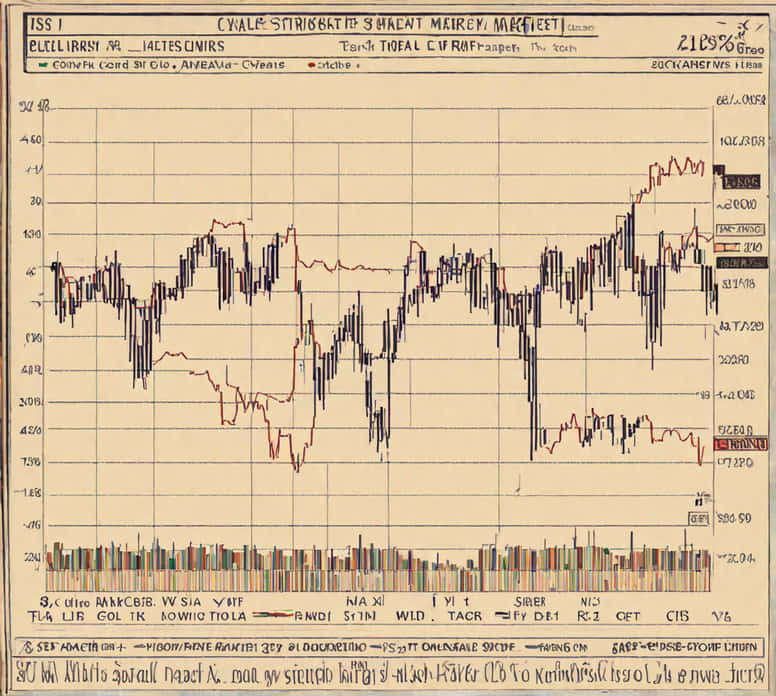Investing in the stock market can be a rewarding but inherently risky venture. As the saying goes, “with great risk comes great reward,” but it’s crucial to approach stock market investments with a strategic mindset to mitigate potential risks. In this article, we’ll delve into effective strategies and practices to safeguard your investments and navigate the dynamic world of stock markets.
Introduction
Investors often find themselves at a crossroads, torn between the allure of substantial financial gains and the fear of potential losses. Understanding and mitigating investment risks is the key to maintaining a balanced and sustainable portfolio. Let’s explore how you can navigate the complexities of the stock market with confidence.
Understanding Investment Risks
Before diving into risk mitigation strategies, it’s essential to grasp the different types of risks inherent in stock market investments. Market risk, financial risk, and systematic risk are among the factors that can significantly impact your investment portfolio. Each type of risk requires a tailored approach for effective mitigation.
Research and Analysis
Knowledge is power in the world of stock markets. Conducting thorough research and analysis is the foundation of sound investment decisions. By delving into financial statements, market trends, and historical data, investors can make informed choices that align with their financial goals.
Diversification Strategies
One of the most effective ways to mitigate risks is through portfolio diversification. Spreading investments across different sectors and asset classes can help cushion the impact of poor-performing assets, minimizing potential losses and enhancing overall portfolio stability.
Risk Tolerance Assessment
Understanding your risk tolerance is a critical step in building a resilient investment strategy. Assessing how much risk you can comfortably bear ensures that your portfolio aligns with your financial goals and emotional capacity for market fluctuations.
Long-Term vs. Short-Term Strategies
Investors often grapple with the decision between long-term and short-term investment strategies. Both approaches have their merits and drawbacks. Balancing a mix of long-term and short-term investments can provide a well-rounded strategy that aligns with diverse financial objectives.
Stay Informed: News and Market Updates
Staying informed is a cornerstone of successful investing. Regularly monitoring news and market updates allows investors to adapt to changing conditions and make timely decisions. Reliable sources of information are essential for maintaining a comprehensive understanding of market dynamics.
Risk Management Tools
Beyond diversification, investors can utilize various risk management tools to protect their portfolios. Stop-loss orders, options trading, and other advanced strategies offer additional layers of protection against unexpected market fluctuations.
Professional Guidance
For those less familiar with the intricacies of the stock market, seeking advice from financial professionals is a prudent choice. Financial advisors can provide tailored guidance based on individual financial situations, offering valuable insights and strategies for risk mitigation.
Monitoring and Adjusting Investments
A hands-on approach to investment management involves regular reviews and adjustments. Market conditions change, and staying proactive ensures that your portfolio remains aligned with your financial goals.
Global Economic Factors
Global economic trends play a significant role in shaping stock market dynamics. Understanding the potential impact of international factors on your investments enables you to make informed decisions and mitigate risks associated with global market fluctuations.
Case Studies: Successful Risk Mitigation
Learning from real-life examples is a powerful way to understand effective risk mitigation strategies. Case studies of investors who navigated challenges successfully provide valuable insights and lessons for all levels of investors.
Psychology of Investment
Emotions often cloud rational decision-making, especially in the realm of investments. Understanding the psychological aspects of investment and implementing strategies to manage emotions contribute to a more disciplined and successful investment approach.
Continuous Learning and Adaptation
The stock market is dynamic, and successful investors are those who commit to continuous learning. Adapting to new trends, technologies, and market conditions ensures that you remain ahead of the curve and well-equipped to navigate the ever-changing landscape.
Conclusion
Mitigating investment risks in stock markets is not a one-size-fits-all endeavor. It requires a combination of strategic planning, research, and adaptability. By understanding the nuances of different risks, employing diversification strategies, and staying informed, investors can safeguard their portfolios and enhance their potential for long-term success.
FAQs
-
How often should I review my investment portfolio for potential adjustments? Regular reviews, at least quarterly, are advisable to ensure your portfolio remains aligned with your financial goals and market conditions.
-
Is it better to focus on long-term or short-term investments for risk mitigation? A balanced approach that includes both long-term and short-term investments is often recommended for effective risk mitigation.
-
What role do financial advisors play in mitigating investment risks? Financial advisors offer personalized guidance and strategies to help investors navigate risks and make informed decisions.
-
How can I assess my risk tolerance for better investment decision-making? Various online tools and assessments can help you gauge your risk tolerance, or you can consult with a financial professional for a comprehensive evaluation.
-
Are there specific industries or sectors that are considered safer for investment? Diversifying across various industries is generally a safer strategy, as it reduces the impact of poor-performing sectors on your overall portfolio.



